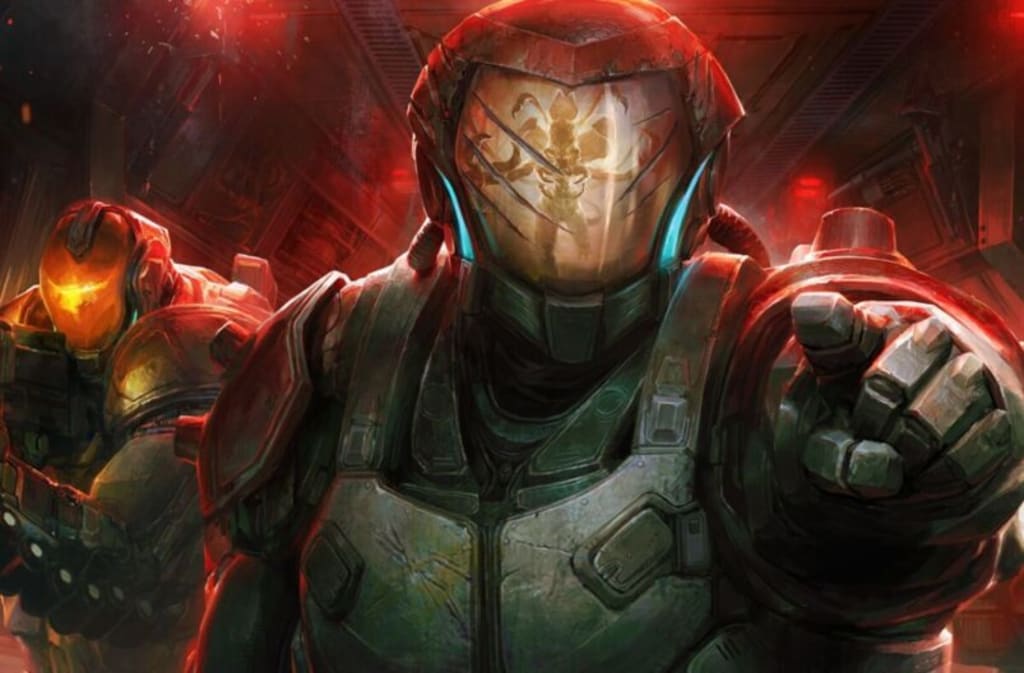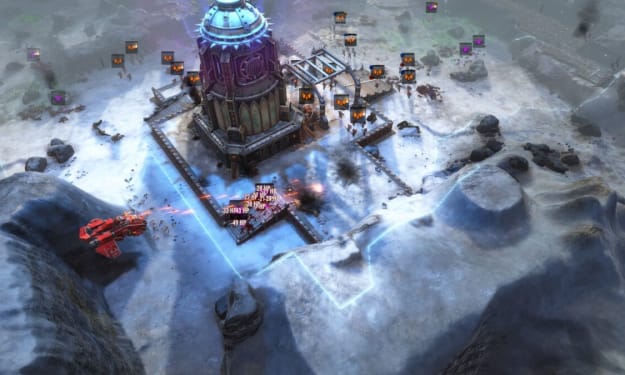Red Solstice 2: Survivors Review
There is a lot of potential in the action tactics sub-genre

There is a lot of potential in the action tactics sub-genre. This sub-genre of strategy gaming can create tension in a dynamic and changing real-time environment while also emphasizing teamwork to overcome the unknown. Ironward's refined sequel, Red Solstice 2 Survivors, succeeds in energizing action tactics sub-genre.
Red Solstice 2 (emphasis added on the tactics) is a real-time tactical game that draws inspiration from XCOM and Left 4 Dead. Cell, a special operation unit based on XCOM, will be commanded by players. It fights the STROL virus that infects Mars and gives humanity a chance of survival.
The premise is intriguing, and the voice acting is excellent. However, the characters are not memorable and the narrative lacks cohesion and presentation.
The game's graphics are a vast improvement on the original. It has smoother textures and better audio design, particularly for weapons. There are parts of the game where the atmosphere is too quiet or absent, which can make it feel empty and dead. But this is rare.
Ironward's bold move to intertwine single-player and multiplayer was a departure from other strategy games that have them as separate modes. This merging can be seen best in the campaign's drop-in cooperative system, where players can invite their friends and open missions to the general public to allow other players to replace the AI followers with their avatars. You can still play single-player or multiplayer and not be interconnected.
Single-player allows players to gather resources, research technologies and improve their mobile landship headquarters. They can also manufacture items, scout areas, and build outposts or installations while they complete tactical story missions and side missions. Although it is almost identical to XCOM's single player offering, this system works well as there is always something to do.
There are many annoyances that can make it difficult to enjoy the strategic layer. It's unacceptable that the game doesn't have a clear control system for time so players can pause, look at the situation and then take action. Although the game does appear to pause automatically when the player moves away from the world map screen, this doesn't make up for the absence of a play/pause button.
A second problem with the strategic layer is the inability to verify mission information once it has been displayed. Players must spend precious time flying to the location to obtain details. This is extremely frustrating because many side missions can be time-sensitive. It is absurd to waste time flying around the map looking for the right mission. This is doubly strange considering that the game automatically pauses when a new mission appears and players are presented with a mission menu to review, regardless of where they are located on the world map.
The game's core consists of tactical missions in which players use their avatars and allied marines (AI and human) to complete objectives. There are a variety of primary objectives and secondary objectives that randomly spawn. You can also find additional equipment and ammunition in the battlefield's lockers and crates scattered throughout each map. You have the opportunity to work together and coordinate, and also have the ability to use your creativity to solve increasingly difficult problems.
Another highlight of the missions is the enemy variety. There's an insanely large roster of mutants. These range from slow-moving zombies to stealthy, swift assassin mutants to huge burrowing worms. The bestiary is filled with so many enemy types that it borders on being too granular, and can sometimes feel like padding. The enemy variety is generally good for the moment-to–moment gameplay because players will need to adapt to every tactical situation that arises.
You can split the multiplayer mode into drop-in coop or individual missions. Drop-in co-op allows randoms or friends to join the multiplayer mode and take part on missions in single-player. However, only campaign's host player can advance through the story while everyone else receives XP. You can also create your own missions and connect to the campaign. It's an easy and flexible system that allows players to join live servers mid-mission.
Multiplayer and single-player are intertwined through a semi-shared progress system. Upgrades made in single-player can be carried over to multiplayer, and vice versa. While rank and experience points are shared equally, large amounts of weapon unlocks and class-specific information remain separate. It's possible to play in both modes without having to go backwards in your progression.
There are many unlocks and ranks available. These include new classes, weapons and buffs. However, cosmetics are very rare. Although it is not a complicated or intricate progression system, there are plenty of items that can be unlocked to suit a wide range of play styles and enhance existing builds.
A cool aspect of the progression system is that players must complete mission-specific challenges to reach new ranks. This encourages them to think outside the box and fosters teamwork to benefit all.
Although the idea of multiplayer and single-player integration sounds wonderful on paper, Red Solstice 2 is a very inconsistent experience. It is clear that the game was designed for multiplayer, making it a poor and unbalanced experience for single-players. This makes the game less relevant. The single-player is most affected by map design and AI companions. These issues cascade into smaller but not less common design problems.
There are two types of tactical map design: side mission maps and story mission maps. These maps have a smaller to average size, are well-paced, and offer little multiplayer potential.
Side mission maps are huge (they can also be used for non campaign multiplayer missions), and clearly meant to be used as a playground to allow for multi-stage multiplayer events. These maps can be difficult to use in single-player. There are long sections where you just walk around the objectives, punctuated by very brief firefights.
It is not that objectives are designed to be completed quickly and easily. Players will be expected to travel long distances to reach objectives. This is not a difficult task. These side missions are a tedious and repetitive part of the campaign. Although multiplayer makes the experience more enjoyable, it is still a challenge to play with multiple friends. The chat system is basic and does not offer voice chat for easier team coordination.
Red Solstice 2 also has a problem with the inconsistency, if any, of the information being relayed to players. This adds to some of the problems. Ironic, considering that the soldier loadouts as well as the in-game archive provide a lot information and stat breakdowns (a great example of too much information without any relevant).
This is evident in the lack of any tutorials on the AI follower command system. There are also few details on dynamic in-mission secondary goals. And little explanation about the progression system. A tutorial on squad commands is a great example of how the game is meant to be played in multiplayer. It also reduces the incentive to play alone.
Secondary objectives are sometimes added to the challenge during missions. The game does not indicate what happens if you complete side objectives. This makes them useless, especially in a single-player campaign.
It's surprising that the options menu in such a small game is so extensive. Even though it doesn’t explain the differences between presets very well, it is still a pleasant surprise. Although AI squadmate pathfinding is quite good, they can get lost on outcroppings and take strange paths. However, it doesn't really affect the gameplay.
The game ran without any problems and anyone who can meet the recommended specs should be able run it without too much trouble. The only crash I experienced was when I had to defend a location from enemy hordes. They shut down, sat there doing nothing and didn't react to any damage.
Red Solstice 2 Survivors is a great attempt at action tactics. It has a lot to offer, including a lot of interesting concepts and content that can be used for progression. The game is not just poorly designed. It also has fundamental problems with how it intertwines single-players and multiplayer. Red Solstice 2 gives me a similar feeling to Radio Commander, where both the concept and actual game design felt out of sync. Red Solstice 2 feels like an extremely inconsistent game. This is why it can only be recommended for players who plan to play with their friends.
About the Creator
Enjoyed the story? Support the Creator.
Subscribe for free to receive all their stories in your feed. You could also pledge your support or give them a one-off tip, letting them know you appreciate their work.





Comments
There are no comments for this story
Be the first to respond and start the conversation.